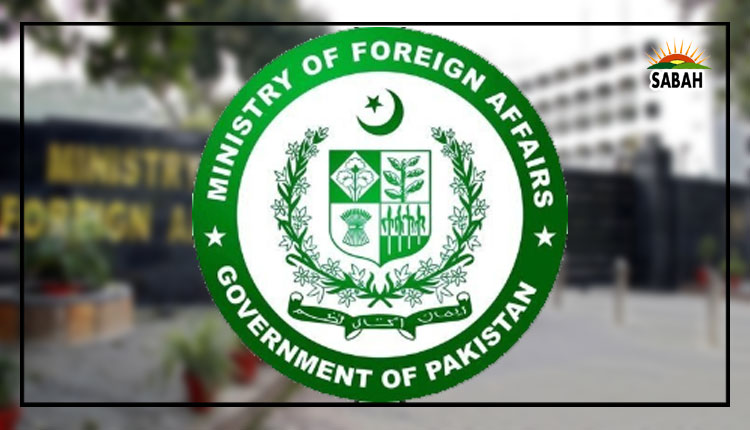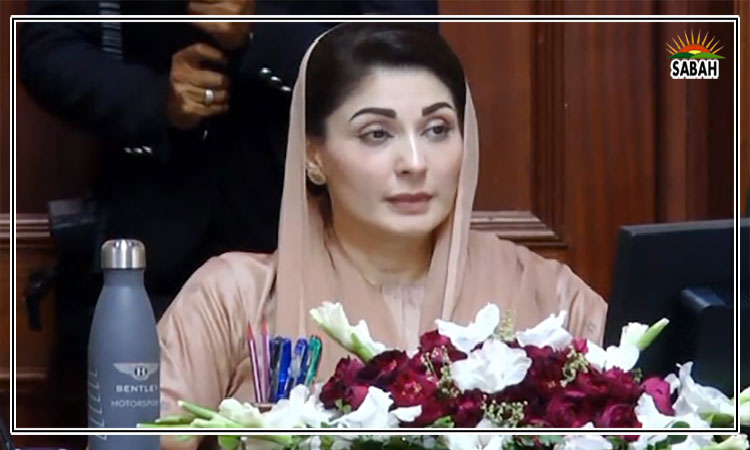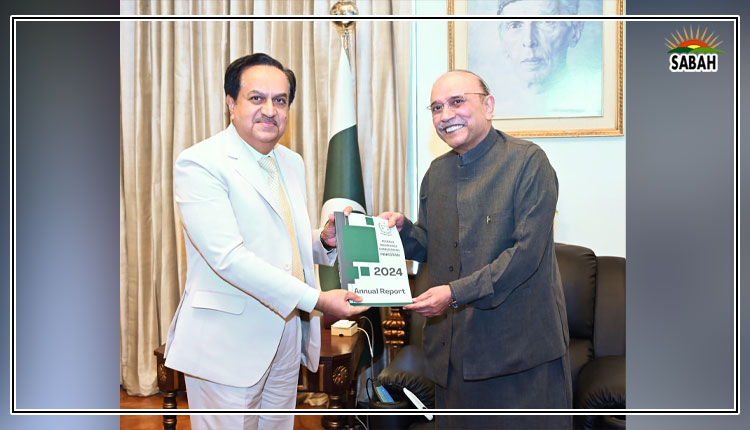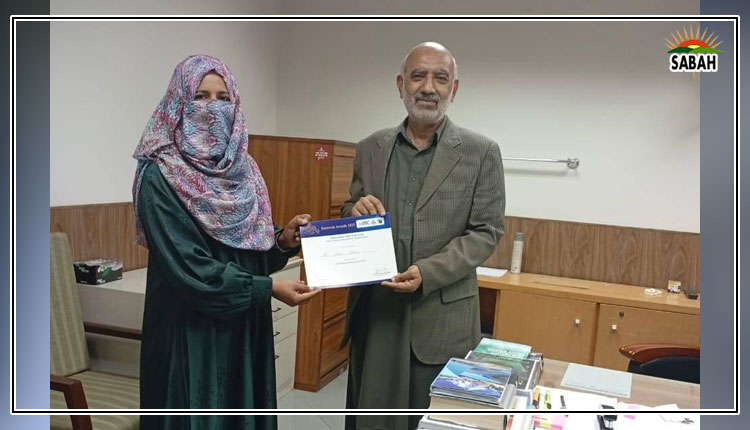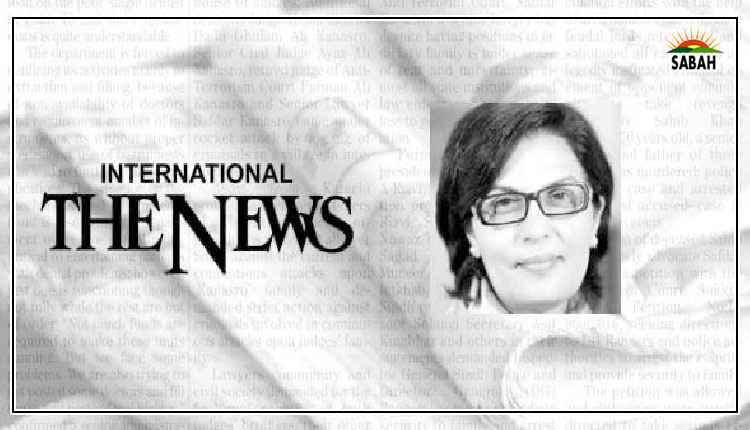Who suffers if Pakistan defaults?… Dr Sania Nishtar
While politicians and economists debate on talk shows and twitter over the inevitability or impossibility of a potential default, millions of working-class families are already feeling the crushing weight of an economic crisis which has made their survival difficult.
I spoke to three people on the street today, randomly. A rickshaw driver and father of two recently had to take up a second job as a familys part-time chauffeur because his daily rickshaw earnings were no longer sufficient to put food on the table.
A young female domestic cleaner had to add more houses to her cleaning roster and sell her only set of miniature gold earrings ever since her husband lost his job at a local textile factory.
Another lady, a widow, and mother of three had been unable to pay her childrens school fees for the last two months, since there is hardly any money left over after paying for utilities and groceries. The school administration has threatened expulsion.
Economic experts have cried hoarse about the dangers of a default for Pakistans economy, including hyperinflation, stock market crashes, bank runs, devaluation, severely restricted imports, reputational risk, and inability for the government to raise new commercial debt. What is discussed less is the horrifying fate that awaits poor and middle-class households in case of default. In fact, even well-to-do upper middle-class families cant escape the shortages, instability and chaos that follows a default. A sovereign default is like a devastating earthquake, the aftershocks of which are felt at all levels in society for years to come.
Pakistan is already struggling with a record 59-year-high inflation rate and growing unemployment due to widespread industry shutdowns, with one in five households reporting at least one member having lost their job. A sovereign default would make matters much worse. There could be hyperinflation, and mass layoffs. Following Zimbabwes default in 2000, hyperinflation led to prices doubling every 24 hours. In Sri Lanka, food inflation reached 90.9 per cent after their 2022 default. Devaluation further contributes to price inflation. Pakistans currency is in freefall, and has devalued even more than Sri Lankas, which should raise alarms about the direction we are veering in.
Global precedent shows that standards of living decline sharply after sovereign defaults and remain low for years. A study of 131 defaults since 1900 found that for countries that defaulted, poverty headcounts exceeded their pre-crisis levels by 30 per cent, and those of the counterfactuals level by 70 per cent immediately after a default, and the gap between defaulters and their controls poverty headcounts remained wide even a decade after default. Pakistans 2022 floods already pushed an additional 9.1 million people, into poverty. A default would push millions more over the brink.
The social costs of a sovereign default are further compounded by the rising risk of food insecurity. A default may curb food availability, with research showing that calorie availability consistently lags in defaulting countries with the gap compared to controls growing to 4.0 percentage points ten years after default. In Sri Lanka in 2022, over 6.2 million people (28 per cent of the population) were estimated to be moderately acute food insecure; 66,000 people severely acute food insecure, and 8.7 million people (39.1 per cent of the population) were not consuming an adequate diet. Twenty per cent of children admitted in hospitals had malnutrition. After default, 64 per cent Venezuelans lost an average of 11 kilograms due to lack of food.
A sovereign default has significant negative implications for health outcomes as well. Infant mortality and life expectancy for defaulters tend to be significantly lower than for controls, with defaulters having 13 per cent more infant deaths ten years after a default and infants that survive are expected to have shorter lives, by up to 1.2 years compared to controls. In Venezuela, in the five years leading up to default in 2017, the number of pregnant women at risk had doubled.
A sovereign default may also deliver a blow to healthcare systems. In the immediate aftermath of a default, limited foreign reserves reduce the ability to import essential commodities such as medicines and medical supplies. Last year, Sri Lanka faced life-threatening shortages of medicine and essential equipment. Horrifyingly, some hospital staff were asked to re-use disposable equipment such as endotracheal tubes.
In the longer term, defaults and subsequent spending cuts also limit governments ability to invest in healthcare. After Argentinas 2001 default, a 2003 survey showed that 12 per cent of individuals experienced some change in health insurance coverage, and more than 60 per cent of these, mainly in the lowest-income groups, lost their coverage altogether, and had to cut back on health services, such as childrens medical checkups and purchasing essential medicines. Consequently, long-term health outcomes decline.
A sovereign default in Pakistan could have far more serious social implications due to three reasons:
First, because while the Sri Lankan default led to a political crisis, Pakistans default would unfold while several existing crises are underway at the political and constitutional levels in a polarized environment, while the country is recovering from the worst flood in its history. As such, therefore, the impact of a sovereign default could increase manifold.
Second, the risk of food insecurity is compounded in Pakistans context, not only due to climate change-related factors but also owing to governance challenges, evidenced by repeated instances of wheat hoarding, despite the wheat bumper crop this year. In addition, despite being a wheat producer, each year we end up relying on approximately $2 billion of wheat imports. In case of a default, this reliance on imported staple foods could be severely constrained. People have been pushed to the limit by soaring inflation. Adding hunger to this mix could be cataclysmic.
Third, because Pakistans healthcare outcomes are already dismal. Infant Mortality Rates and Maternal Mortality Rates stand at 63.3 (per 1000 live births, compared to South Asian average of 31) and 154 respectively with stunting and wasting of children at 40.2 per cent and 17.7 per cent. In the last year, existing social safety nets to improve access to healthcare, such as the Sehat Sahulat Program, and Ehsaas have either been dismantled or have received reduced funding. The healthcare system may disintegrate if public healthcare spending is further cut in the wake of a default.
As a political crisis unravels, structural economic reform and forging a deal with the IMF seem to be far from being the decision-makers priorities. Yet every day that an economic recovery plan is delayed, we edge one step closer to default. For the sake of millions of families welfare for years to come, we must act now, and act decisively.
The writer is a senator and former special assistant to the prime minister for poverty alleviation and social safety. She tweets @SaniaNishtar
Courtesy The News


